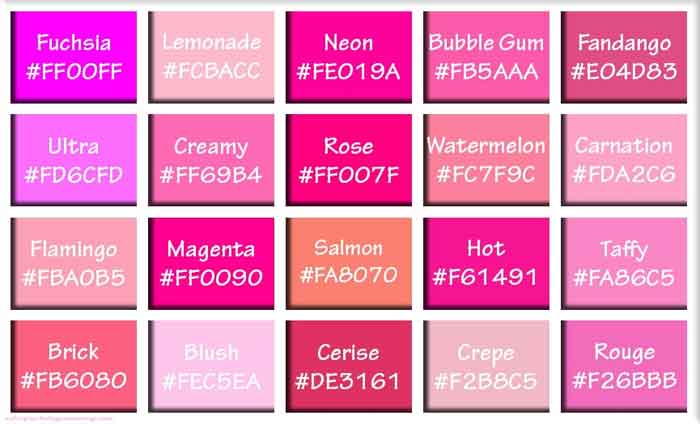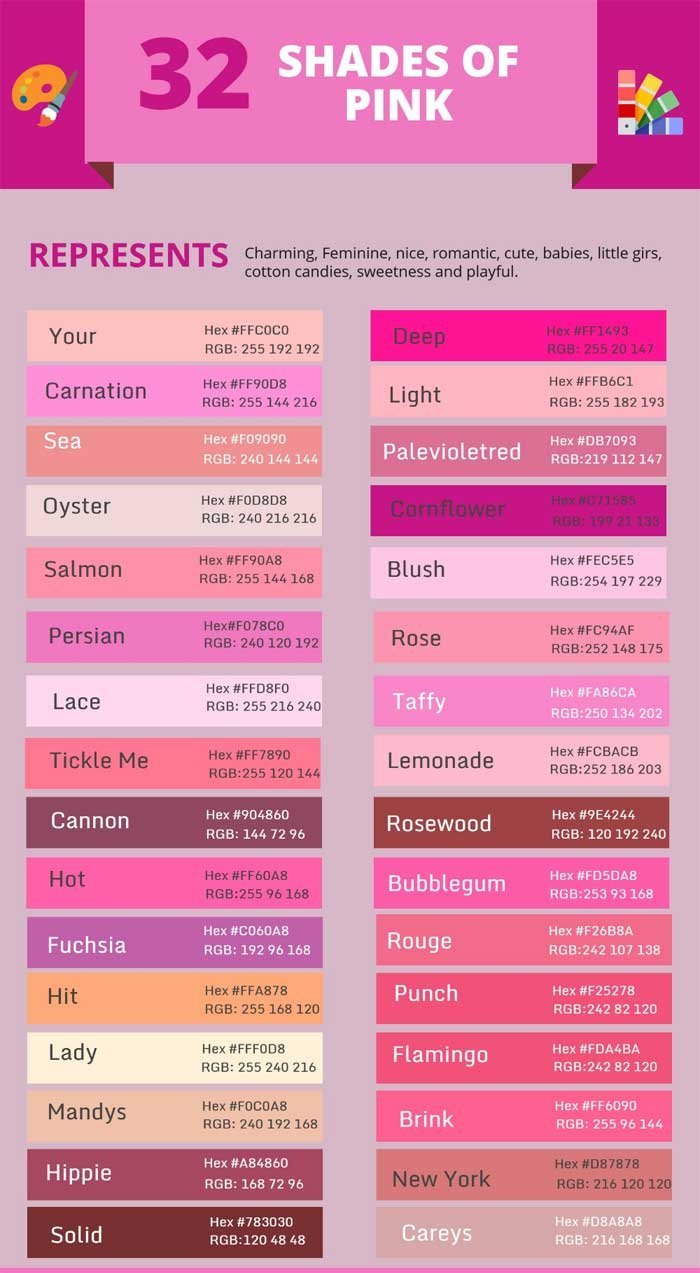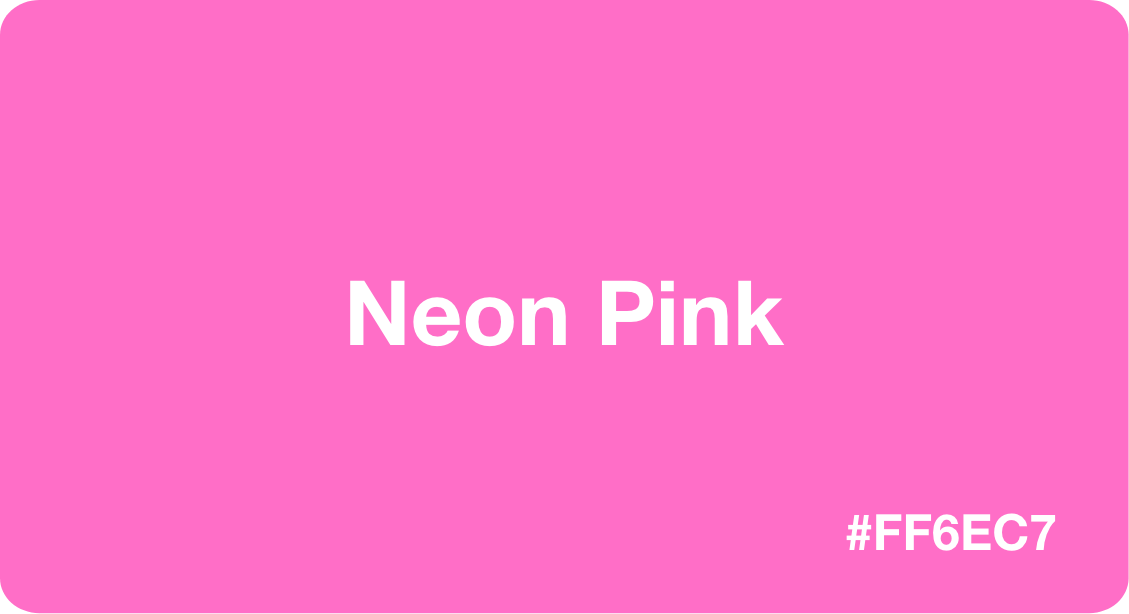To figure out how to make pink, we must first understand several aspects of both physics and society.
We’ll teach you all there is to know about what colors produce pink, as well as some color theory! It also depends on the purpose you are creating this pink color paint. And if this is for painting the house, then the point is whether it is for the interior or exterior.
Here’s what you’ll discover below when it comes to creating paint of pink color and the colours that will be used for making pink color paint:
A Quick Primer on Making Pink
The hue of your final product is determined by the ratio of each color used. This implies that pink isn’t a true color in the strict sense. When you combine any hue with white, you get tints.
Also read how to make purple colour here.
It appears to be a straightforward task. Not so fast, though. Getting the precise shade of pink you desire, such as a dark mauve or a brilliant fuchsia, is more difficult. You’ll need to learn about the science of color to grasp how to achieve these lovely pink tones!
What Is Pink and Why Does It Mean What You Think? The Science Behind the Color
A simple explanation of how to turn red and white into pink is a complicated procedure. And that necessitates a deeper understanding of how light operates.
Our eyes only detect the colors that are reflected or bounced off. In other words, an object’s physical make-up affects how light (also known as electromagnetic radiation) bounces off of it in a different way, which leads to color!
So all colors may bounce off and appear white. It’s also feasible that no colors bounce off at all and the object appears black. However, most of the time, an item has some additional hue such as red, blue, or green – the wavelength of light reflected by the object!
What exactly is a wavelength? Consider the sea as light. The waves may come in tall and close together at times, or they might come in low and far apart at other times.
The concept is similar to that of white light, save for the fact that the waves are significantly smaller and closer together. Your eyes calculate these lengths as they bounce off a surface and send them to your brain in different hues.
Red, a key element of pink, has a wavelength of around 700 nanometers and is one of the longest wavelengths we can perceive. The distance between crests is about the same as that between soap bubbles. But more significantly, because whatever we see to be red absorbs all frequencies save those with wavelengths shorter than 700 nm, it’s due to something in its makeup that prevents it from reflecting light at these longer wavelengths. Because the thing reflects just that precise wavelength, we believe it’s crimson!
Consider reading how to make brown colour for your reference here, if you plan to make and paint brown colour.
So exactly what are the components that go into pink? When any wavelengths that originate from 700 nm (which is red) are combined with white (which covers the entire visible spectrum), you get pink.
How To Create The Color Pink?
Additive Mixing
The colors come together when the light waves themselves are combined. What are the colors that result from combining wavelengths? Pink is a combination of red and blue light rays in additive mixing.
Subtractive Mixing
Subtractive mixing is the process of combining sources with different wavelengths, such as paints or dyes, to take away wavelengths from the visible light spectrum. The subtractive color process involves removing certain frequencies from a beam of light while reflecting others.
These white and red chemicals, when mixed by subtractive mixing, produce a color that we perceive as pink!
Consider reading how to make skin colour here.
Tints and Shades
Remember, we said that pink isn’t a color, it’s a tone? Tints are colors created by combining white with another hue. Shades are produced by adding black to one of the hues in the original color wheel. To produce pink, something crimson must be combined with something white and perhaps a dash of another hue.
Neon Pink Shades
Most of us call a color “neon” if it seems to be an intensely brilliant hue of a specific color. Neon orange, yellow, and pink are popular hues for high-visibility situations or just trying to recapture the 80s vibe.
3 Ways to Get the Right Pink Hue
Now that we’ve gone through the color pink in-depth, you’re probably eager to experiment with your shade of pink. Then check out our three best suggestions to assist you in creating the precise shade of pink that you desire.
Also read how to make orange colour if you want to make orange colour.
Tip 1 – Choose a Hue
In the context of color, “hue” refers solely to the colored pigment or mixtures of pigments without any white or black added. (Keep in mind that white and black alter the saturation of your hue!) The component that gives your color its purity is known as hue.
Tip 2 – Consider the Value
A color’s value is its relative light or the dark side. Baby pink, for example, has a lighter value (more white has been added).
Darker colors appear to be more frightening and threatening. If you want your pink color to be darker and brighter, try adding more black to the values.
Tip 3: Adjust the Saturation
If you want your fuchsia or magenta to be bright, turn up the saturation dial.
If you are planning to paint your home with pink two colour combination for bedroom walls then try these combinations and make your bedroom look attractive.
Note on Different Pink Color Tones
When it comes to pink, there are a variety of different shades and tones that can be used. Depending on the shade of pink, it can be associated with different connotations and meanings. For example, a brighter pink tends to be more youthful and playful, while a darker pink can be more sophisticated and elegant.
When choosing a pink tone for your project, consider what mood or feeling you are trying to communicate. If you want to create a fun and vibrant atmosphere, go for a brighter shade of pink. For something more romantic or graceful, opt for a softer hue. No matter which tone you choose, pink is sure to add some personality to your project!
Different Pink Color Tones:
- Baby pink: Soft, delicate, and youthful. Associated with innocence and purity.
- Coral pink: Playful and friendly. Often used in nursery designs or for little girls’ bedrooms.
- Fuchsia: A bolder shade of pink that can be fun and energetic.
- Hot pink: Bright, attention-grabbing, and confident.
- Light pink: Gentle, romantic, and sweet.
- Peachy pink: Warm and inviting. Can be used to create a cozy atmosphere.
- Salmon pink: Relaxing and soothing. Often used in spas or other places where people want to unwind.
- Tropical pink: Vibrant and exciting. Perfect for summertime or tropical-themed designs.
- Watermelon pink: A refreshing and fun shade that is perfect for summer.
Have a look at the modern two colour combination for living room here to paint your living room with attractive and trendy colours today.
As you can see, there is a wide range of different pink color tones to choose from. When picking a pink tone, think about the overall atmosphere you want to create and what message you want to communicate.
Conclusion
You can use it to make a statement or to convey a certain feeling, whether that’s playful or serious.
Now that you know a bit more about the color pink, we hope you feel confident in your ability to mix colors. If you need help visualizing your ideal hue of pink, be sure to check out Pantone’s online color tool.
Important Links:
- Indian house colour combination outside
- Modern texture paint designs
- Asian Paints colour combination with code
- Radium paint
Also have a look at the bottle painting ideas here.


